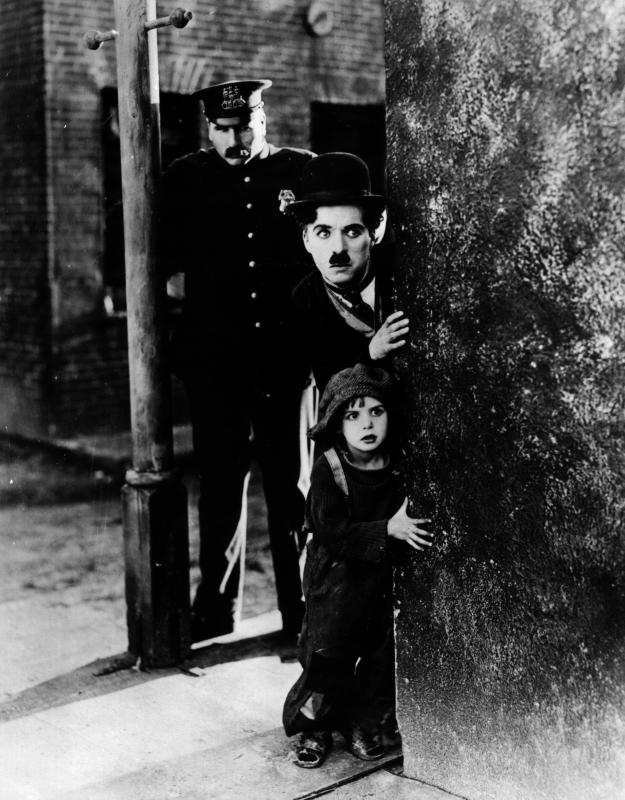1983

Among the thousands of films preserved by the AFI/NEA Film Preservation Program is Charlie Chaplin’s The Kid (1921), starring Chaplin and Jackie Coogan. Photo courtesy of AFI Stills Collection
What would it be like if America’s greatest films were to disappear? U.S. films before 1951 used nitrate-based film stock, and by the mid-1960s, more than half of those films had been lost due to the deterioration of the nitrate.
In 1967, the NEA had teamed with the Motion Picture Association of America and the Ford Foundation to found the American Film Institute (AFI) to preserve America’s filmic heritage. Over time, AFI activities included film exhibitions, student training and workshops, and library and scholarly services. So in 1983, the NEA partnered with AFI to create a program to focus specifically on film preservation, the AFI/NEA Film Preservation Program. The program would help organizations locate, preserve, and catalog films of artistic value that were in danger of deterioration or permanent damage.
To coordinate the preservation program on a national level, the two organizations created the National Center for Film and Video Preservation in September 1983. The center has been responsible for the development of a National Moving Image Database, researching and publishing of the AFI Catalog of Feature Films, and locating and acquiring films and television programs for inclusion in the AFI Collection of the Library of Congress—which consists of more than 27,500 films and shorts—and other archives at universities, museums, and libraries nationwide. The AFI Catalog of Feature Films is the most authoritative filmographic database on the Internet with nearly 60,000 American feature-length films and 17,000 short films produced from 1893-2011.
Among the films preserved through the program were John Ford’s Stagecoach (1949), Victor Flemings’ Joan of Arc (1948), Charlie Chaplin’s The Kid (1921), and D.W. Griffith’s Intolerance (1916). As Robert Rosen, founding director of the National Center for Film and Video Preservation and former dean of the UCLA School of Theater, Film and Television observed, “The NEA’s effort was historically significant for supporting preservation at a time when it was not appreciated by the field and was in the vanguard for committing public resources that then encouraged the commitment of private resources for preservation.”

